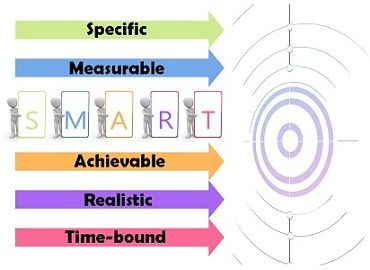 You might have observed when you were a little kid; you want to be an astronaut, doctor, teacher or any other successful person. These are the aims of a person’s life which he/she want to achieve in the lifetime. The word aim is often misconstrued with objective, as they talk about what an individual or entity may want to achieve. Both are the desired result of the work performed by an individual, however, they entail different concepts. The aim is the general statement of the expected outcome.
You might have observed when you were a little kid; you want to be an astronaut, doctor, teacher or any other successful person. These are the aims of a person’s life which he/she want to achieve in the lifetime. The word aim is often misconstrued with objective, as they talk about what an individual or entity may want to achieve. Both are the desired result of the work performed by an individual, however, they entail different concepts. The aim is the general statement of the expected outcome.
In contrast, objectives are the steps taken to accomplish the long-term goals of the company. So, when these terms are used in the right context, then only their correct implication is possible. And, to do so, take a look at the given article to know the difference between aim and objective.
Content: Aim Vs Objective
Comparison Chart
| Basis for Comparison | Aim | Objective |
|---|---|---|
| Meaning | An aim is a ultimate goal, which an individual or the entity strive to achieve. | Objective is something a person/entity seeks to achieve, by continuously chasing it. |
| Addresses | Long term outcomes | Short term outcomes |
| What is it? | General direction or intent of an individual/ company. | Specific goal of an individual or company. |
| Concerned with | Purpose | Achievement |
| Describes | What is to be achieved? | How it is to be achieved? |
| Time Bound | No | Yes |
| Measurement | Impossible | Possible |
Definition of Aim
In business parlance, a general statement, written in broad terms, explaining what is intended to achieve, is called aim. It is the overall purpose or the desired outcome, of the entity, which indicates what and where you expect to be, at the end. These are the sentences which ascertain the target of the program/project.
Aims act as basic directions while conducting a research or carrying out a project. It can be chunked into various objectives which help in reaching the aim easily. It has a long range perspective which reflects aspirations and ambition of the entity.
Definition of Objective
After the aims are set by the organization, the next step is to formulate objectives. Objectives are concrete targets or goals of the company, that needs to be fulfilled within a time frame and with limited resources. They are used in different context and are in the form of short sentences, explaining what you want actually.
Objectives act as an instruction for the employees of the company, what they need to do, to attain the desired result. They have a short range perspective, i.e. they are small steps taken by the entity to reach the long term aim. The characteristic of objectives are described as SMART+C:
- Specific
- Measurable
- Achievable
- Realistic or Relevant
- Time bound
- Challenging
Key Differences Between Aim and Objective
The following points are vital, so far as the difference between aim and objective is concerned:
- The term aim is described as the ultimate goal, which an individual or the entity strive to achieve. The objective is something a person/entity seeks to achieve, by continuously chasing it.
- The aim of the entity reflects its long-term outcomes while its objectives indicate the short term targets of the entity.
- Aim refers to the general direction or intent of an individual/company. On the other hand, the objective is the specific goal of an individual or company.
- .The aim is related to the company’s mission and purpose whereas objectives are concerned with the achievements of the company.
- Aim answers the question, what is to be achieved? Unlike objective which answers, How it is to be achieved?
- Aims are not time bound, i.e. there is no time frame within which the aim of the entity must be achieved as it is hard to say accurately, how much time it will take to achieve. On the other hand, objectives are always accompanied with a time frame, within which it must be achieved.
- Last but not the least difference between these two is on measurability, i.e. objectives are measurable in nature while aims lack measurability.
Conclusion
When it comes to specification, aims are a bit vague while objectives are very specific. Further, the aims and objectives of any entity must be concise and brief. They are prepared in such a way, that they should show a connection between what a company aspires, and how it is going to pursue those aims. There should be no contradiction between these two and they should not repeat each other in different ways. Moreover, they need to be realistic, i.e. the aim and objectives can be achieved within a limited time frame.






lucy says
insightful indeed is the word i’m looking for.
Akelembula Desmond says
Excellent am now good to know the difference between Aims and Objectives thanks a lot
Carmen says
Thank you!… 🙂
Drashti says
Nice way to showing difference
Stephanie Johnson says
Thank you! I appreciate this! Simple, practical, useful.
Muhammad Sharif says
better source of knowledge
Kona says
It’s worth explained
NWAOKOKOROM OBIOMA WISDOM says
Well explained
Dolly Gupta says
Good